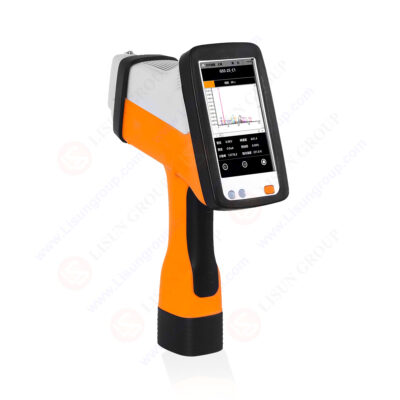
XRF (X-ray Fluorescence) analyzers are commonly used analytical devices capable of quickly and non-destructively determining the composition of various materials. XRF analyzers excite the elements in a sample using X-rays, causing inner-shell electrons to transition to higher energy levels and emit secondary X-rays (X-ray fluorescence). These fluorescent X-rays are then used for elemental analysis.
Types of XRF Technology
Based on the scattering methods of X-rays, XRF is divided into two types: Energy Dispersive X-ray Fluorescence (EDXRF or EDX) and Wavelength Dispersive X-ray Fluorescence (WDXRF or WDX). EDXRF is more commonly used in the market.
Elements Detectable by XRF Testing
XRF testing can detect a wide range of elements, including:
• Metal Elements: Such as iron, copper, lead, zinc, tin, aluminum, and nickel. These elements are crucial in common materials.
• Non-Metal Elements: Such as sulfur, oxygen, carbon, nitrogen, and fluorine. Detection of these elements is mainly applied in industries like food and pharmaceuticals.
Working Principle of XRF Analyzers
XRF analyzers use the properties of X-rays to analyze elements within materials by emitting X-ray fluorescence. When a sample is exposed to high-energy X-rays, the atoms within the sample become excited and emit X-rays of specific energies. By measuring these X-rays’ energy and intensity, the concentration of elements in the sample can be determined.
Applications of XRF Analyzers
XRF analyzers are widely used in various fields, including:
• Metal Material Analysis: Quickly and accurately determine the elemental composition of metal materials.
• Environmental Monitoring: Detect heavy metal pollutants in soil, water, and air.
• Food and Pharmaceutical Testing: Analyze trace elements in food and drugs to ensure their safety and quality.
• Archaeology and Art Authentication: Non-destructively analyze the composition of artifacts and artworks, providing evidence for their origin and age.
Common Applications
XRF analyzers are highly versatile instruments capable of measuring various types of samples and providing accurate results. Common applications include:
• Sorting Metal Scrap: Quickly identify and separate different types of metal scrap.
• Identifying Alloy Grades: Determine the specific alloy composition of metal samples.
• Quality Control in Metal Manufacturing: Ensure that metal materials meet specifications during production.
• Geological Exploration and Mining: Analyze the elemental composition of ores and soil samples.
• Industrial Material Testing: Such as analyzing the composition of cement or coal.
• Consumer Product Testing: Such as detecting lead or other harmful contaminants in paint layers.
Limitations of XRF Analyzers
Despite their powerful capabilities, XRF analyzers have some limitations. They cannot detect the lightest elements on the periodic table (such as hydrogen, carbon, nitrogen, oxygen, and sodium) because these elements’ X-rays are too weak to be effectively detected. Additionally, XRF analyzers can only provide information about the presence and concentration of elements, not the chemical structure of the sample.
Portable X-ray Fluorescence Spectrometer | XRF Metal Analyzer | Alloy Gold TesterEDX 3 AL2
Advantages of Portable Handheld XRF Analyzers
Portable handheld XRF analyzers are highly favored for many on-site applications due to their rapid detection and reliable results. Their main advantages include:
• Real-Time Detection: Test large, bulky, or expensive-to-transport samples on-site, providing immediate information for decision-making.
• Efficiency and Flexibility: Avoid delays caused by sample backlog by not needing to send samples to a laboratory.
• Convenient Operation: Easier to use than laboratory equipment, with straightforward operation.
• Safety of Using Portable XRF Analyzers
When used according to guidelines, portable handheld XRF analyzers are safe. Although XRF analyzers generate ionizing radiation, following basic safety rules (such as not pointing the trigger at people) ensures that the user’s radiation exposure is lower than or equal to natural radiation sources.
Complexity of XRF Testing
For users, XRF testing is not complicated. Manufacturers handle various complex details, and users need only select the correct sample detection method and perform calibration to see clear results on the screen with a “point and shoot” approach. The interface design is similar to a smartphone, making it user-friendly.
Time Required for XRF Testing
The time required for an XRF test depends on the sample’s nature and the elements’ concentration to be detected:
• Rapid Detection: Many alloys can be tested in just 1-2 seconds.
• Detailed Analysis: Complex samples like geological samples may require 1-2 minutes.
• Trace Element Detection: Detecting elements in low concentrations (parts per million) may take longer.
Conclusion
As an efficient and non-destructive analytical tool, XRF analyzers play a crucial role in material analysis and quality control with their broad detection range and accurate results. With ongoing technological advancements, the application prospects of XRF analyzers will become even more promising.
https://www.lisungroup.com/news/technology-news/working-principle-and-applications-of-xrf-analyzers.html
.jpg)
Comments
Post a Comment